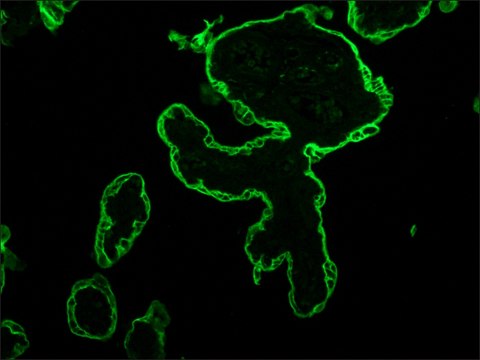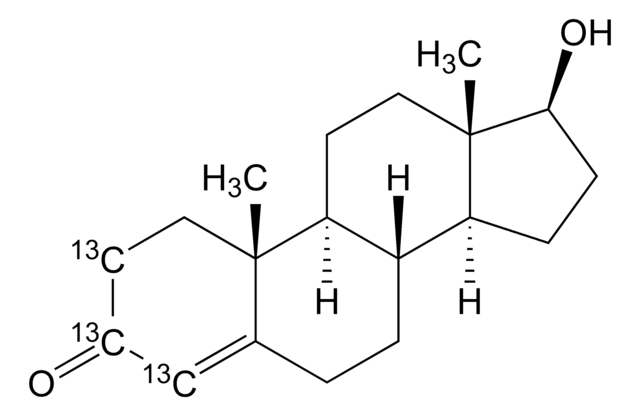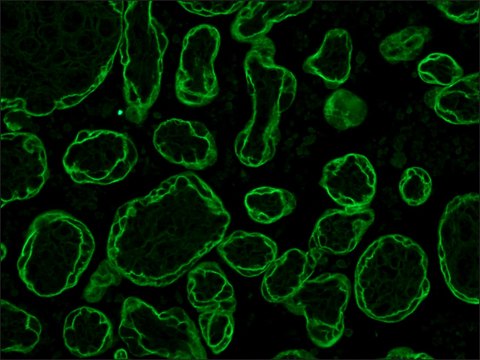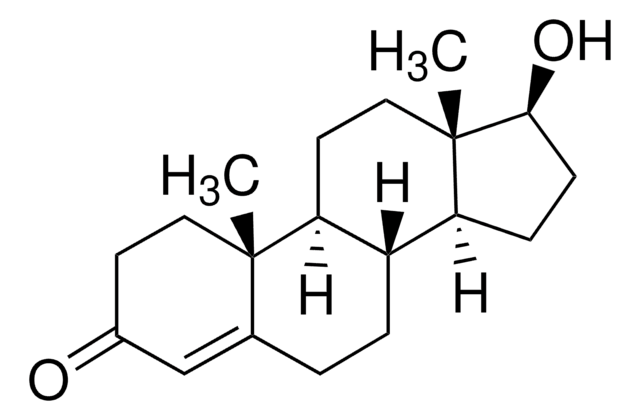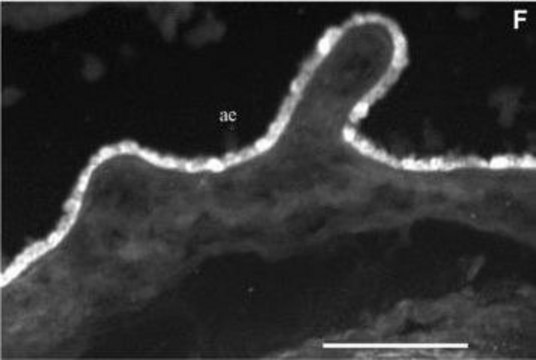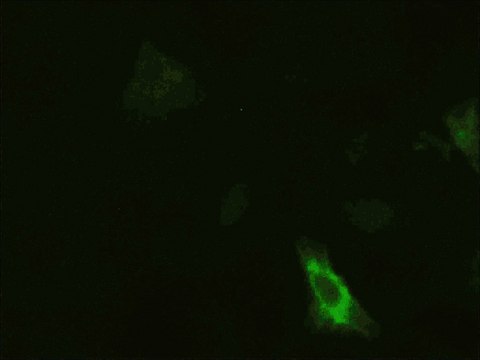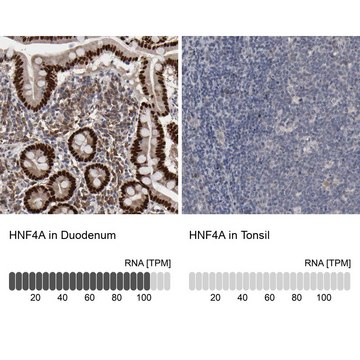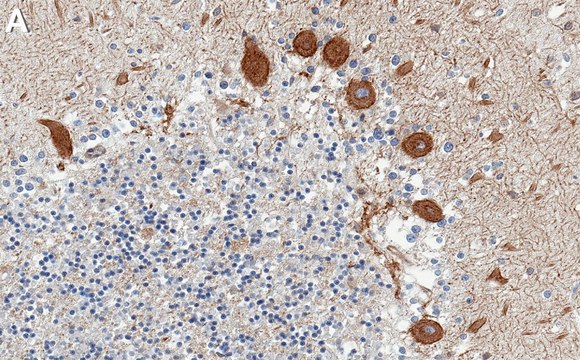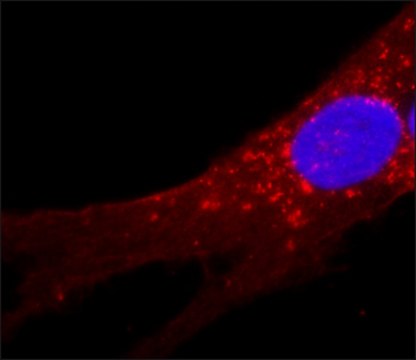C6930
Monoclonal Anti-Cytokeratin Peptide 19 antibody produced in mouse
clone A53-B/A2, tissue culture supernatant
Synonym(s):
Anti-CK19, Anti-K19, Anti-K1CS
About This Item
Recommended Products
biological source
mouse
conjugate
unconjugated
antibody form
tissue culture supernatant
antibody product type
primary antibodies
clone
A53-B/A2, monoclonal
mol wt
antigen 40 kDa
contains
15 mM sodium azide
species reactivity
human
technique(s)
indirect immunofluorescence: 1:50 using formalin-fixed, paraffin-embedded, human tissue sections
microarray: suitable
isotype
IgG2a
UniProt accession no.
shipped in
dry ice
storage temp.
−20°C
target post-translational modification
unmodified
Gene Information
human ... KRT19(3880)
General description
Specificity
Immunogen
Application
- for immunoblotting, for immunocytochemistry,
- for immunofluorescence,
- as a marker of premalignant lesions of the oral epithelium, to label cytokeratin in formalin-fixed or Carnoy-fixed, paraffin embedded tissue and in frozen sections of human tissue, to label simple epithelia and basal cells of noncornifying stratified squamous epithelia.
Biochem/physiol Actions
Disclaimer
Not finding the right product?
Try our Product Selector Tool.
Storage Class Code
10 - Combustible liquids
WGK
nwg
Flash Point(F)
Not applicable
Flash Point(C)
Not applicable
Regulatory Information
Choose from one of the most recent versions:
Certificates of Analysis (COA)
Don't see the Right Version?
If you require a particular version, you can look up a specific certificate by the Lot or Batch number.
Already Own This Product?
Find documentation for the products that you have recently purchased in the Document Library.
Our team of scientists has experience in all areas of research including Life Science, Material Science, Chemical Synthesis, Chromatography, Analytical and many others.
Contact Technical Service